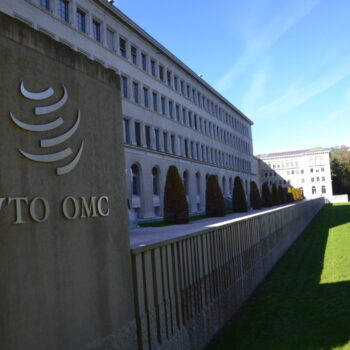European climate politics has a big new focus: the European Commission is preparing a flagship long-term climate strategy. This strategy will affect every sector of Europe’s economy and so is attracting a lot of attention and potentially difficult politics. At the eve of a major public consultation, E3G sets out five things to know about the upcoming strategy.
It’s a long journey…
Rumours have been circulating for over a year that the Commission would soon be working on a long-term climate strategy. Yet no official announcement came until March 2018, when EU leaders called on the Commission to prepare a long-term climate strategy in line with the Paris Agreement. This request triggered a process that will last until early 2020 and can potentially change the face of Europe’s economy.
The first step of the strategy is to narrow down options and quantify pathways. The Commission services are thus now supervising modelling work that should be done once the summer is over. Simultaneously, the Commission is organising a hearing for stakeholders in Brussels on 10th and 11th July, followed by a public consultation that will run across the Union until mid-October. The technical work and the public consultation will feed into a first political output to be discussed by Commissioners. This ‘vision document’ is due to be presented in November, ahead of COP24 in Katowice.
The Commission must adopt the fully-fledged strategy by March next year, just ahead of the European parliamentary elections of May 2019. The rest of the process is still to be defined but European heads of states and governments are expected to endorse the strategy by early 2020, in order to meet the deadline set out in the Paris Agreement on climate change.
… with many pitfalls on the way
Early decisions will shape the quality and impact of the strategy. This is why the strategy must:
1. Be in line with the Paris Agreement and the latest science. The previous roadmap was adopted before COP21 and was based upon an outdated target range considered as adequate for developed nations. But the world has changed. The new strategy must be based on the new normal captured in the Paris Agreement. Hence, the modelling must include different pathways to reach net 0 by 2050 at the latest, or any more ambitious target compatible with the internationally agreed temperature goals of well below 2°C and aiming at 1.5°C.
2. Start a conversation. Strategies do not generate rights and duties by themselves, but they can change the culture of a sector, or an economy. European institutions, member states, cities, regions, investors, businesses and the public at large must be given political ownership of the strategy and its key messages for the strategy to be a success. The alternative is that the strategy becomes an irrelevant Brussels “paper plan”, disconnected from the real economy developments and local reality.
3. Be the reference for Europe. Many sectors of the economy need guidance about the long-term transformation they will undergo. For it to happen, the roadmap must be considered as a reference point by other legislation. For instance, it must be incorporated into the design of infrastructure networks, setting priorities for research and innovation and incorporated into the sustainable finance agenda to help avoid stranded assets.
More of the same is not acceptable
This is not the first attempt of the Commission at a long-term climate strategy. The previous Commission put forward a similar document back in 2011 but the experience was not successful in all respects.
Looking back at the roadmap, technology developments have overtaken the assumptions. The capital cost of renewable energy has fallen much more steeply than original forecast, with costs of solar and wind already falling below the levels projected for 2050.
In itself, it is not a problem. Roadmaps do not have to be right to be useful. But the roadmap failed at remaining relevant. While it clearly inspired the 2020 framework, it was not even mentioned in the “Clean Energy Package” discussions that are currently taking place.
The influence of the previous roadmap quickly faded out because the document had no clear process to be updated: it is only 7 years later, and almost 1,000 days since the Paris Agreement, that the Commission is putting long-term planning back on the agenda. The Commission should also clarify the reach of the document. It is for instance expected that the document will look at back-casting the long-term climate ambition into the shorter-term climate and energy targets.
More favourable politics?
Mishandling the process and overlooking the politics will lead to frustration and blockage.
The 2011 roadmap for instance was never formally endorsed by the European Council because of the lack of unanimity. The plan still certainly had an impact but its interpretation might have been more conservative than if broadly supported. The Commission has, for instance, taken as granted an implicit 2050 target of 80% greenhouse gas cuts while the range available for developed nations was 80 to 95%.
This climate strategy is probably off to a better start. Heads of States and Governments unanimously called for this new strategy. The mandate of the European Council was further refined during the negotiations on the regulation on Energy Union Governance for which a deal was unanimously backed by European Ambassadors at the end of June 2018. Around the same period, 14 governments wrote to the Commission to request several pathways towards carbon neutrality and at least one pathway to reach net 0 GHG by 2050. The European Parliament has adopted a similar approach and has called for an objective of net 0 emissions by 2050 at the latest while recently voting in favour of the need to develop by the end of 2018 an “ambitious and coordinated long-term net-zero carbon strategy for 2050.
A climate strategy is a yardstick
Long-term strategies are valuable tools for policy-makers and private stakeholders because they set a policy destination, identify one or several pathways to reach that objective and determine interim milestones. Strategies are yardsticks and help identify shorter-term key decisions that must be taken to reach the overall goal.
Climate strategies in particular will usually set a greenhouse gas reduction target and identify potential decarbonisation pathway(s), key technologies and policies.
Governments’ long-term strategies inform private sector decisions. In order to take an informed decision on the market potential and return on investments in the long run, businesses and investors need clarity about policy objectives in the long run. Robust long-term strategies will also usually lead to a more stable regulatory environment that will prevent detrimental policy U-turn.
Politically, climate strategies are crucial in the Paris Agreement’s toolbox. Current greenhouse gas reduction pledges are not sufficient to limit global warming well below 2°C, aiming at 1.5°C. Consequently, parties agreed to re-convene every five years to negotiate upgraded ambition. Long-term strategies compatible with the agreed temperature goals will expose the need for early actions required to keep us on a path compatible with the Paris Agreement.
E3G – Europe’s next challenge? Designing a future-proof climate strategy [PDF 508KB]


